Fader Interview – First Light
Fader is Benge’s third project to feature a renowned vocalist from the pioneering days of electronic music. Andy Jones catches up with the vintage synth master and Blancmange’s Neil Arthur to discuss their new project and Benge’s incredible synth grotto… Benge has one of the best studios we’ve come across, period. Buried in the depths […]
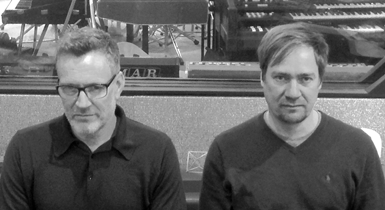
Fader is Benge’s third project to feature a renowned vocalist from the pioneering days of electronic music. Andy Jones catches up with the vintage synth master and Blancmange’s Neil Arthur to discuss their new project and Benge’s incredible synth grotto…
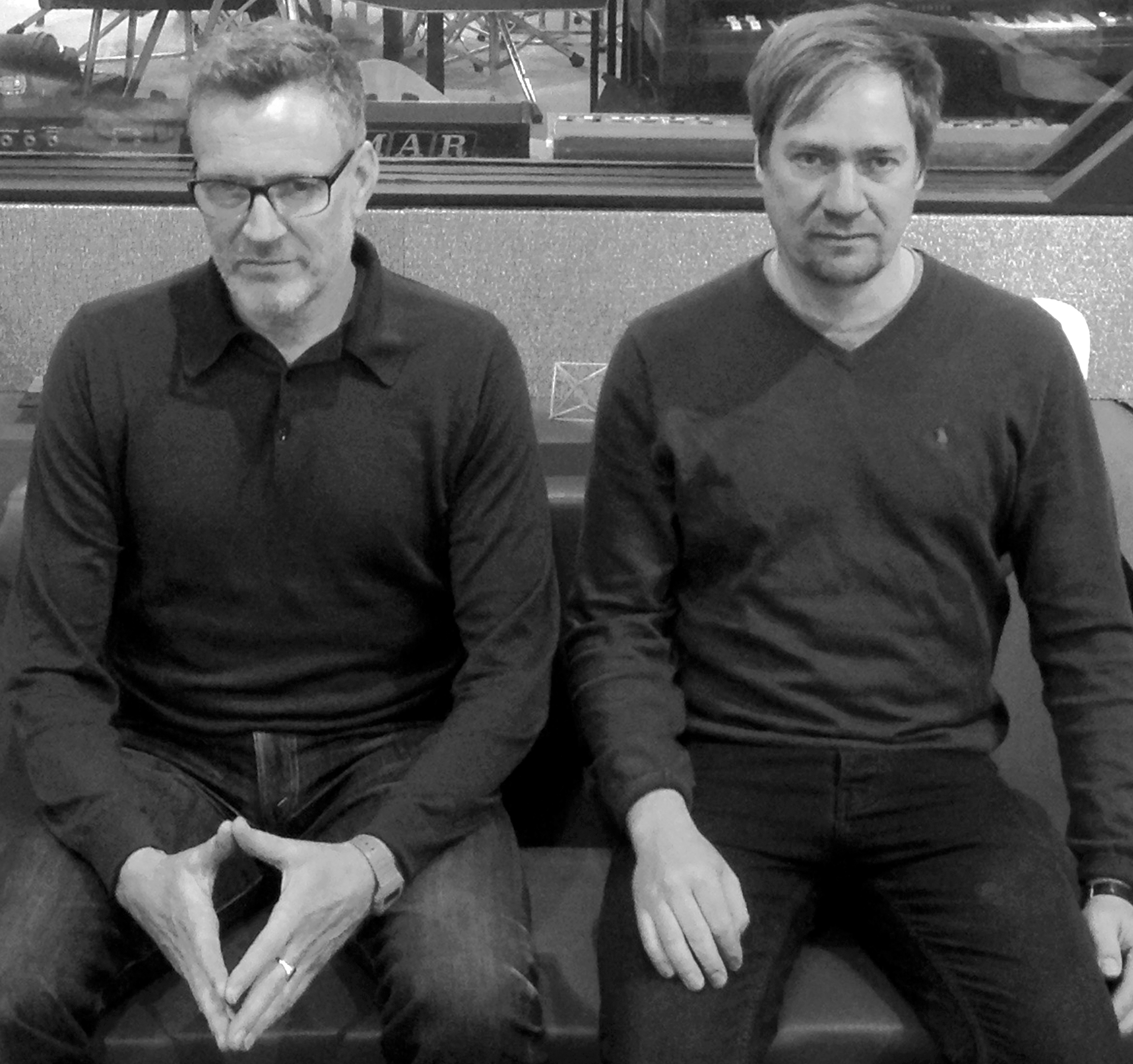
Benge has one of the best studios we’ve come across, period. Buried in the depths of the Cornish countryside is a bunker’s worth of vintage gear, which almost resembles a super-villain’s 1960s secret hideaway – albeit a super villain who has a penchant for vintage modulars. Benge has (nearly) everything: a Moog Modular system, Roland System 100m, a rare ARP 2500 modular, a Yamaha CS-80, even a Seiko synth we’d never heard of (we thought they just did watches).
There are racks of outboard, analogue keyboards, digital bargains, random pedals, computers, mementos, cables and a dog. A big dog. Benge doesn’t just collect synths. He’s just completed a hat-trick of recordings with legendary vocalists, themselves no strangers to the technology he has gathered, perhaps even drawn in to his world because of it.
First he recorded (and still does) with the Godfather of English synth music, John Foxx. With Wrangler – featured three years ago in MusicTech – Benge teamed up with Stephen Mallinder, the Cabaret Voltaire vocalist, and now it’s the turn of Blancmange frontman Neil Arthur to provide the voice – only this time it’s different.
Firstly, they didn’t meet during the recording of their album First Light – much of it was actually recorded years ago in Los Angeles. Secondly, none of the gear you see on the following pages was used – although we will talk about a lot of it as this is MusicTech, after all. And lastly, the two didn’t meet to talk about how the project should turn out – they let it evolve on its own…
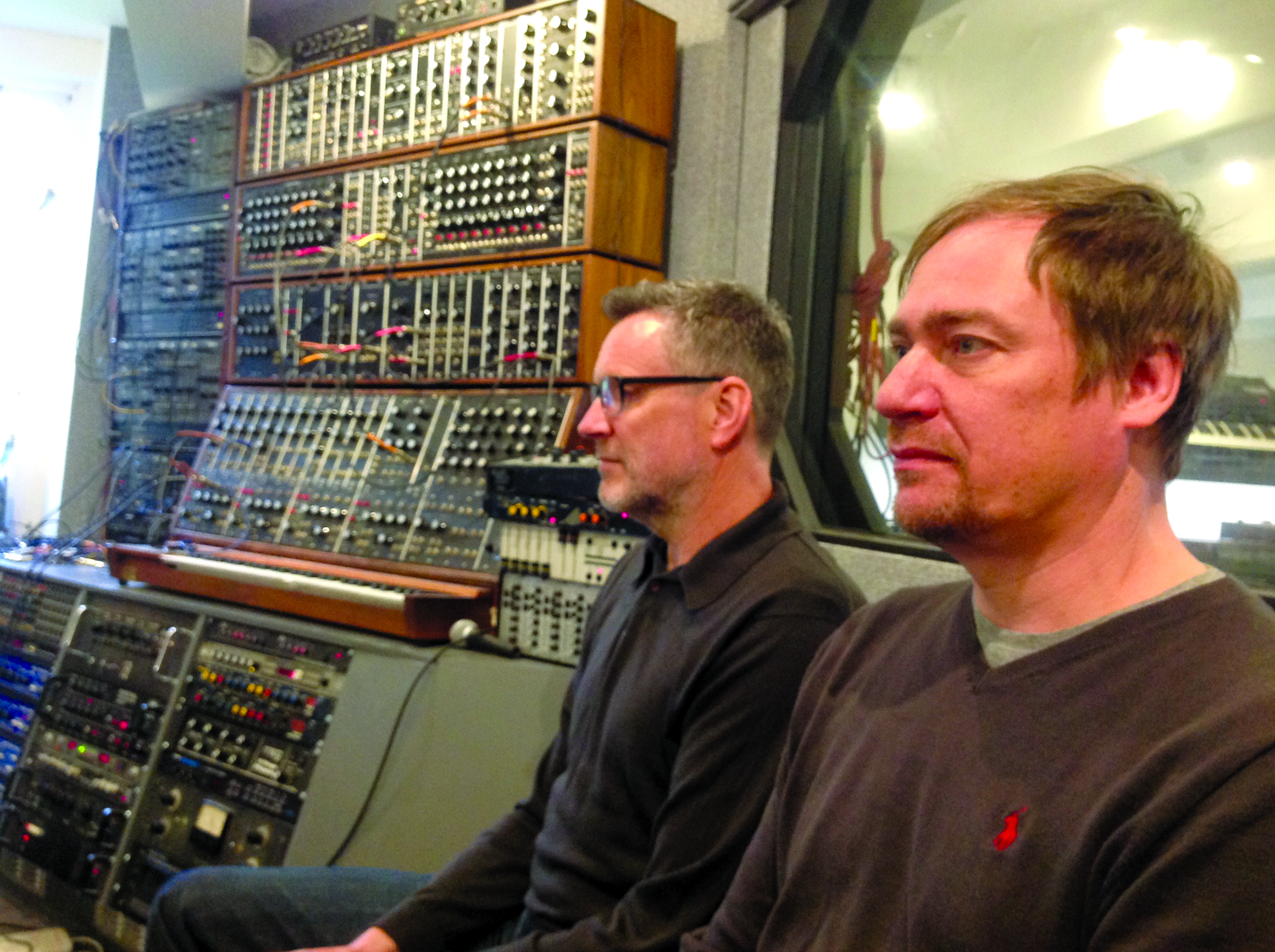
New modular versus vintage modular
MusicTech: With both Benge and Neil’s backgrounds in using classic synths, have either been tempted by the newer Eurorack route?
Benge: I haven’t been, as it’s a bottomless pit isn’t it? I like self-contained systems and pretty much all of these here are, so when you are working on them you come up with sounds that have a signature to them. With the modern stuff, you’re putting together a system from loads of manufacturers, so you miss out on that. I know you could put a system together by one manufacturer, but there’s something about a vintage system that means it has the sound of a time, one referencing the 70s or 80s, and I like to bring that sound into a modern context.
The main thing is to create your own unique voice, to get a sound that no one else has and stick to it, believe in it and nurture it. I do think the new modular scene is incredible, though, as there are more manufacturers than there have ever been before – so it’s amazing. Seven years ago, you couldn’t have predicted that that would happen.
Neil: Yes, just like the resurgence of vinyl. It’s funny, I heard someone asked what they were into the other day and they just replied: “I’m into vinyl,” and I thought: “What, all of it?” I think the modular stuff is incredible and, while we came from an experimental background, I really enjoy writing songs now, so I don’t feel the need to collect synths. I add things occasionally, like the Roland Boutique stuff, and I even bought the littleBits thing from Korg, so I’m into that stuff. So I’ll probably go back to using tape loops rather than modular!
Benge should really be stroking a white cat in a menacing way as I arrive at the studio to meet him and Neil; instead, Rocko the dog takes centre stage to keep an eye on proceedings. As we look around the incredible collection of gear, the first question is obvious: how did Benge’s interest in vintage synths come about?
“My parents used to run a school for autistic children which was at the family home,” he explains. “We had a music room and it had a little modular synth, a homemade one that a friend of the family had built. There was also a 70s Hammond organ, a four-track tape machine, percussion and things like that. I used to play on it when I got home from school. I was probably listening to prog rock at the time and I was also into Brian Eno and some of the German stuff, a lot of Kraftwerk.”
“We started out and both wanted to be experimental – no straight rhythms or melodies”
Benge ended up in art school, but carried on his experimental compositions, producing four solo albums…
“I wasn’t into dance music. In fact, there wasn’t a single 4/4 beat on them – they all had weird time signatures. I was really into Warp artists like Autechre and Black Dog, bands on the more experimental side. I started my own record label called Expanding Records, as no one wanted to release my stuff – and it grew quite big. We put out albums by about 15 different artists and it’s still going.
“In fact, we’re just about to put out a box set of all 17 albums on vinyl. That got me in touch with lots of artists and made me realise that I really like collaborating.”
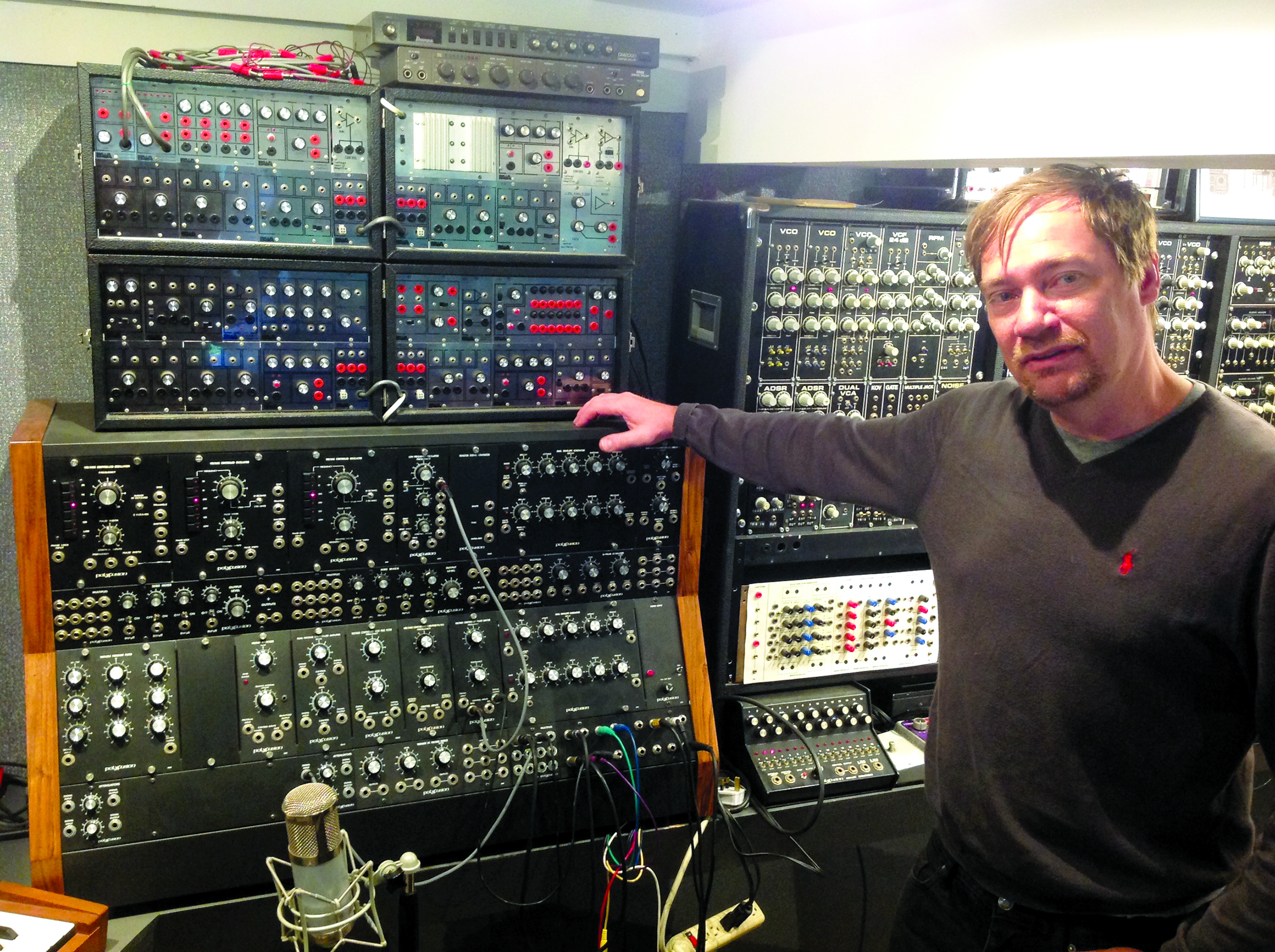
And collaborate he certainly does. John Foxx, Stephen Mallinder and now Neil Arthur… What’s going on? Is he collecting synth icons?
“I think it’s because I’m passionate about this vintage gear,” Benge replies, “and I’m also very passionate about that period of music and about making it still relevant. I met John during the making of the BBC Synth Britannia documentary. They wanted a background to film it and used my studio that was based in Hoxton at the time, and he came down for that. He’d just got back into working with analogue so came to the studio to shoot the documentary and ended up wanting to do an album there.
“So we started out and both wanted to be really experimental – no straight rhythms or melody – but as soon as we started working together we ended up going straight for the melody!”
Neil Arthur’s studio
MusicTech: Tell us about your setup, Neil?
NA: It works for me, but there’s no comparisons to Benge’s! I used to have a studio doing film and TV music and writing songs, but I did find I was using less and less gear and I even got rid of my mixing desk. I now have a Mackie Big Knob, a pair of Mackie 824s, a Mac, MOTU interface, a Joe Meek preamp, a couple of mics (AKG and Shure Beta 57, which is what I use on stage), and I have a reflection filter and that’s it. I use a lot of software instruments in Logic (which drives me crazy) and Ableton (which is lovely for ideas). There’s some classic stuff not used as much. I have a rackmount Super Jupiter which I do still use.
MT: Any studio advice that you’ve picked up?
NA: Like Benge, I’ve learnt not to go into the studio unless you have something, even if it’s just an idea or an acoustic-guitar line. When I was working to deadlines with film and TV music, you really had to utilise your time well.
MT: What’s your favourite studio gear?
NA: I love the Gforce stuff – the Oddity 2 is my favourite. Obviously, you want to find your own sound, but there are some bloody good presets in there. I really like my Super Jupiter module. There’s also the new Roland Boutique modules. I have the JX and JP ones. I was thinking of incorporating them into the Blancmange setup to see if we could get Blancmange in a smaller box, but you have to daisychain them together to get the polyphony.
Benge later moved to LA for a few months to do some writing with the view to possibly living there. He rented out the Hoxton studio, to Soulwax (“They’re heavily into analogue, so took the studio on while”), so Benge had to buy a new setup in LA.
“I went on Craigslist and eBay and bought some very choice bits: an Oberheim Two Voice, a Roland Juno-60, a little vintage 80s drum machine, some effects units, speakers and an old Yamaha analogue mixing desk – everything for a studio! I had a sound in my head that I wanted to achieve, so I knew I wanted to get this certain period of gear from the late 70s and early 80s.”
“I got a lot of it off an old guy who had had it forever but had just retired. He came around and delivered it – the mixer, speakers, even a table it fitted in and the effects units – and he was in tears… he was so sad, as it represented the end of his career.”
Inside Benge’s incredible studio
MusicTech: You’ve amassed a huge amount of gear. How did that start?
Benge: One day, I asked my dad about the old modular synth we’d had back in the house and he told me he’d just thrown it away the previous month after a loft clearout. I was really upset, as I remembered using it so much – so I then got into buying this stuff. Back in the early 90s, it was so out of fashion that people were literally just throwing it away. I’d just use Loot magazine and go around to people’s houses. The first thing I bought was an Octave Cat for £20 and sold that for £40 to buy a Yamaha CS-40m. It’s a duophonic mono synth. I’ve now got a CS-80 which cost $600.
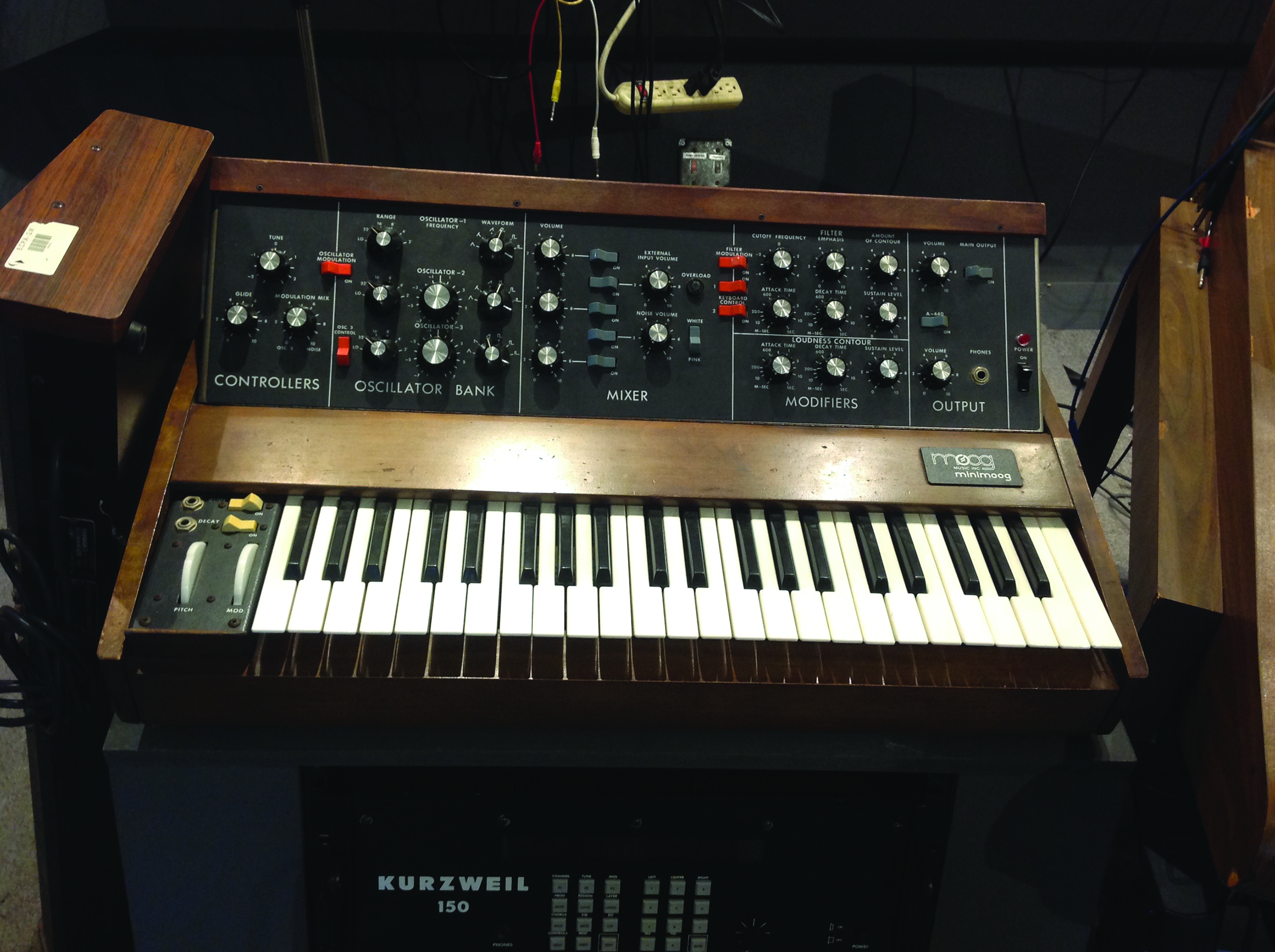
MT: Can you actually have too many options?
Benge: The key to not going mad in here is to know what you want, otherwise you could spend a whole day on a hi-hat sound. I’m good at avoiding that situation. One thing I don’t like is someone coming in and we try to write something from scratch. It’s so difficult to do and it rarely works out. It’s always better to come in with something, have a sequence set up or a framework that leads towards a track, or you can just go nowhere.
Also, don’t worry too much about the crackles and the bits inbetween the sounds – in fact, capture them! I like to capture all of the glitches and not throw away the mistakes and the noise you get from each system. There’s an ARP 2500 over there that uses sliders to patch it. You line up the inputs and outputs of the modules using these sliders and you get sounds that bleed through with a kind of crosstalk thing. It makes it more interesting; you get things you never expected to hear in the background.
Upping the fader
Benge worked on many tracks using the setup but soon realised that LA wasn’t for him and, on the day he departed, he sold the studio on. He used some of the tracks on the Wrangler project with Mallinder and Phil Winter, but still had many tracks left over.
“They were about 80 per cent done, but needed something to gel them together… I didn’t know what,” Benge says. “I played them to my manager who happens to be Neil’s manager too, and he suggested sending them to him. Obviously, I was aware of all of Neil’s work from Blancmange…”
“And I knew of Benge’s stuff with John Foxx and Wrangler and I’d also heard an album of his called Twenty Systems,” Neil Arthur recalls. “We had briefly met, but not talked about doing music together. I thought this was such a great idea, so I said ‘Yeah great, let’s have a listen’. I’m always writing lyrics, so have a lot, and in this case, many that fell into the songs. They just seemed to work. I started hearing melodies for them, so thought ‘this is good’. I did everything in Logic and got all of my ideas down and sent them back.”
“Yeah, it took longer to master it than it did recording it!” Benge laughs. “And little of the music was done with the gear here – it was all that I bought in LA!” So the process of adding Neil’s vocal to Benge’s older recordings turned out to be a super quick one, but did Neil try and do anything specific with this project to make it sound different from Blancmange?
“No, I was just being me, but I’ll go with whatever suits the moment,” he says. “I do have a thing about using distortion on my voice, probably a little too much – a couple of people say I should ease back on the plug-in. It was the overdrive one from Logic, I find that a little more subtle than the distortion. I’ve also got a SansAmp that I put vocals through and sometimes, I put it through the Waves distortion or just some simple EQ.”
Benge reminds Neil about another vocal addition. “There’s a power drill on one of the vocals, as Neil left the door of the studio open when he was having some work done in the house. But it sounds in tune and comes in at just the right place, so we left it in…We even gave the workman a credit on the album!”
Six of the Benge
ARP 2500 rack
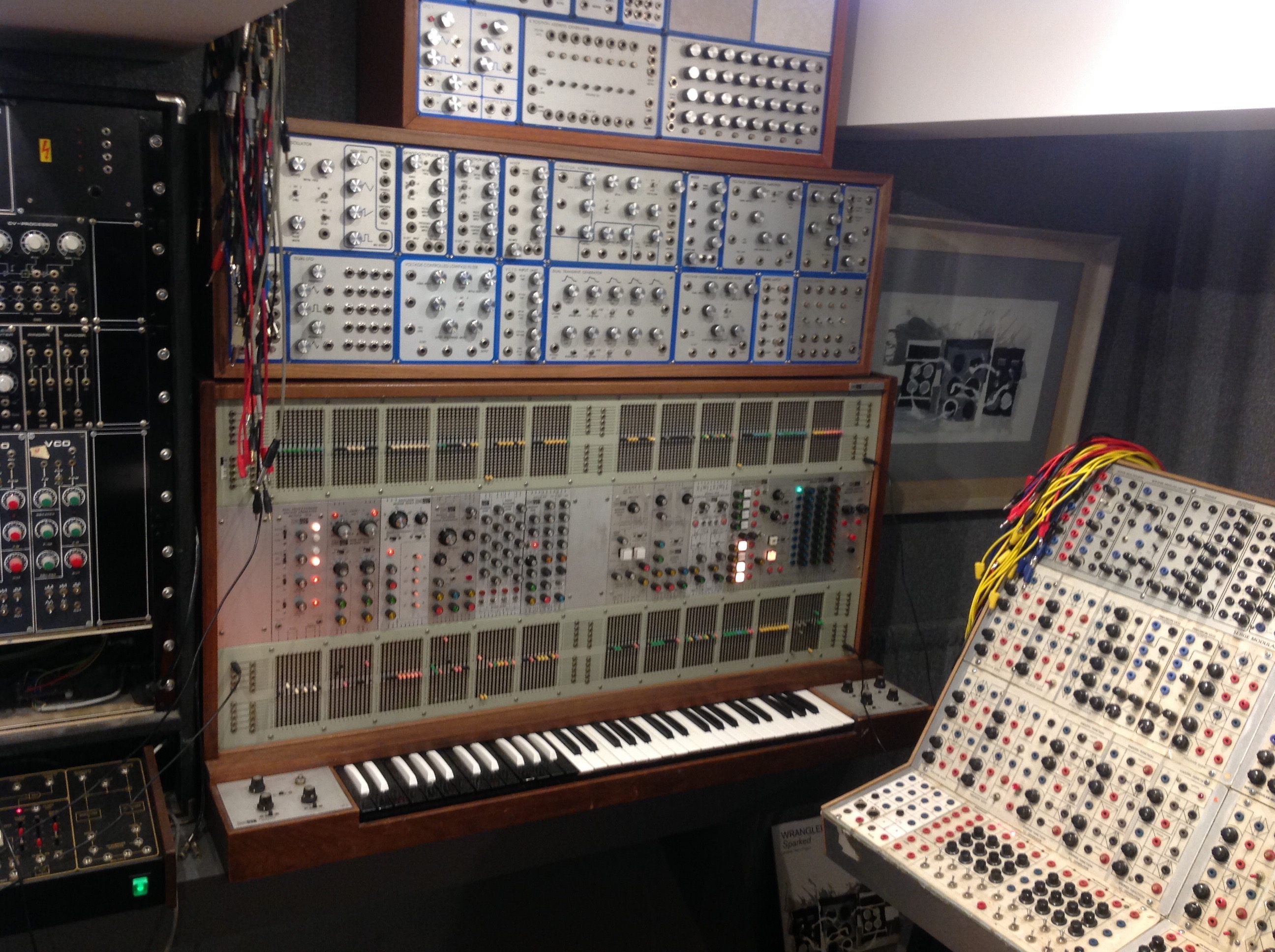
“This is one of my favourite possessions – I’m so lucky to have got hold of one before the prices went crazy. I got this one years ago from a mixing desk dealer who got it from a studio clearance. The day after I bought it, he called me up to ask if I would sell it back to him, as Hans Zimmer wanted to buy it – I said ‘No’, of course!”
Korg 800DV
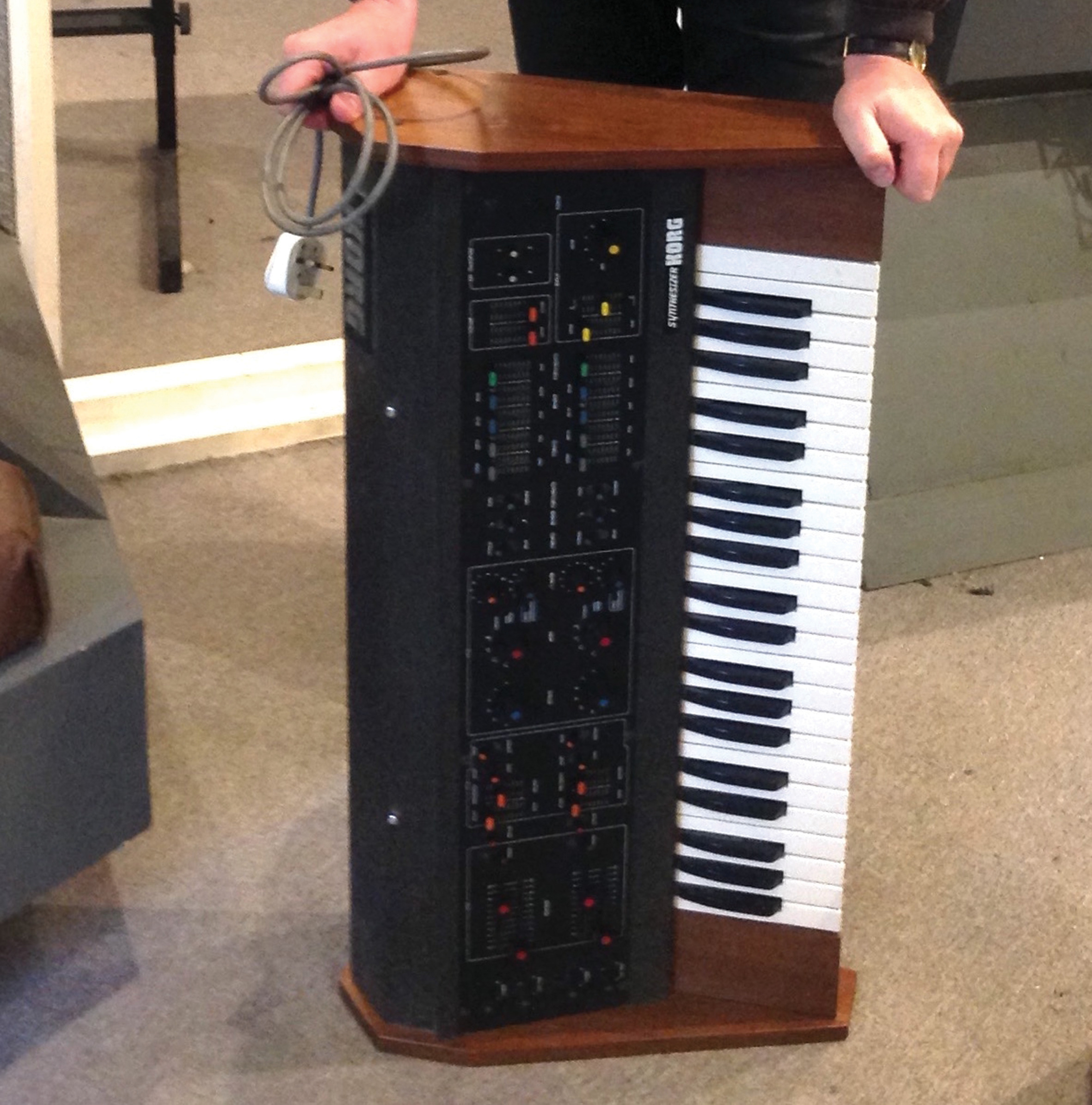
“This is the Korg Dual Voice – an amazingly versatile and underrated synth from 1975. It’s two fully functioning mono synths in one package: you can layer sounds up or play it duophonically. You can easily set it up so one sound morphs into another – starts off noisy and decays away into a pure tone, things which you can’t do on many other synths.”
Buchla 100 modular
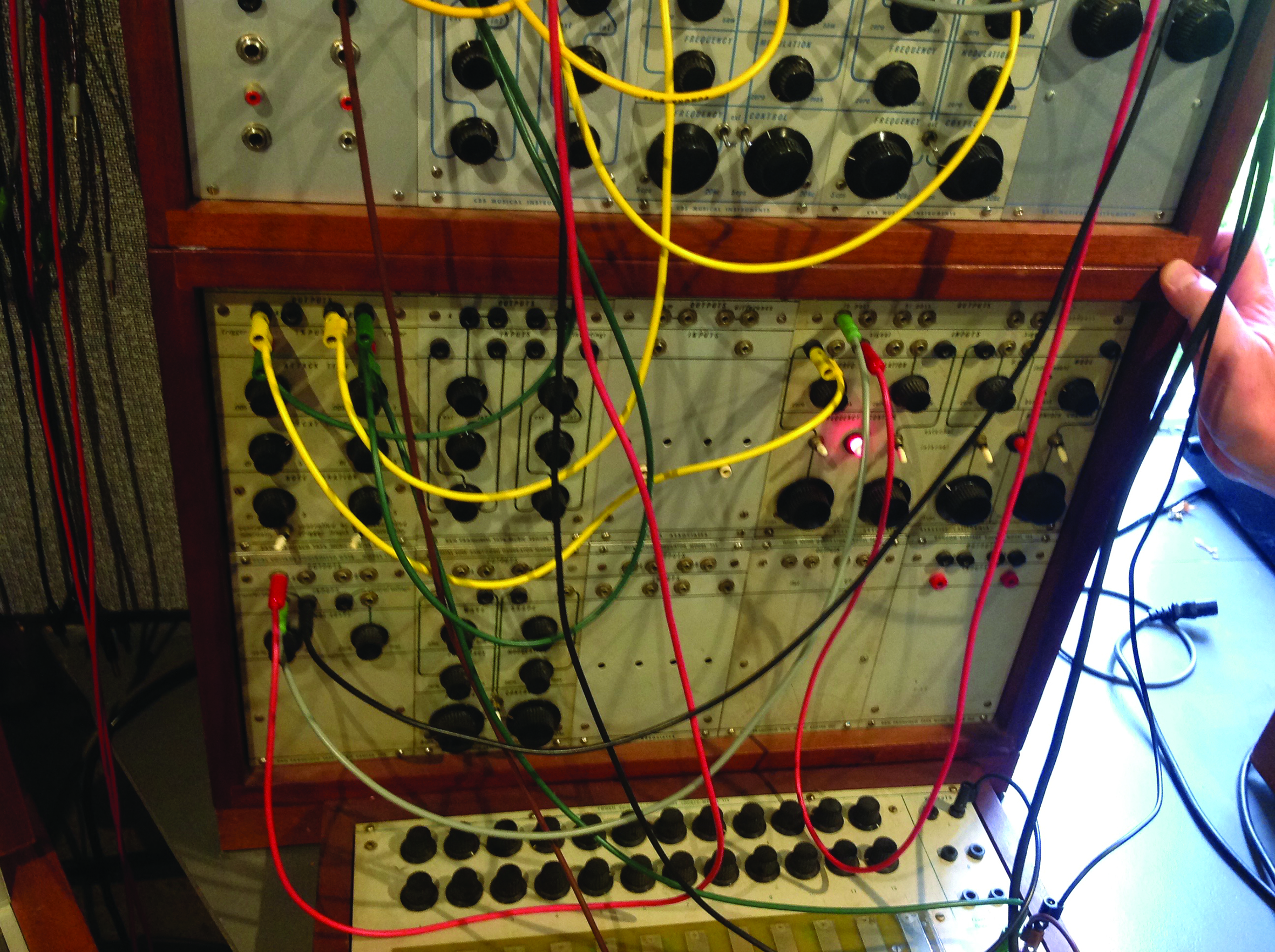
“I got into Buchla stuff a few years ago and it’s amazing. It took me a few years to put my system together, because owning a vintage Buchla is a bit like trying to join a secret society – you need to know who to speak to and learn a secret handshake before you’re allowed into the party. This thing sounds so raw – like listening to pure electricity.”
EMS polysynthi
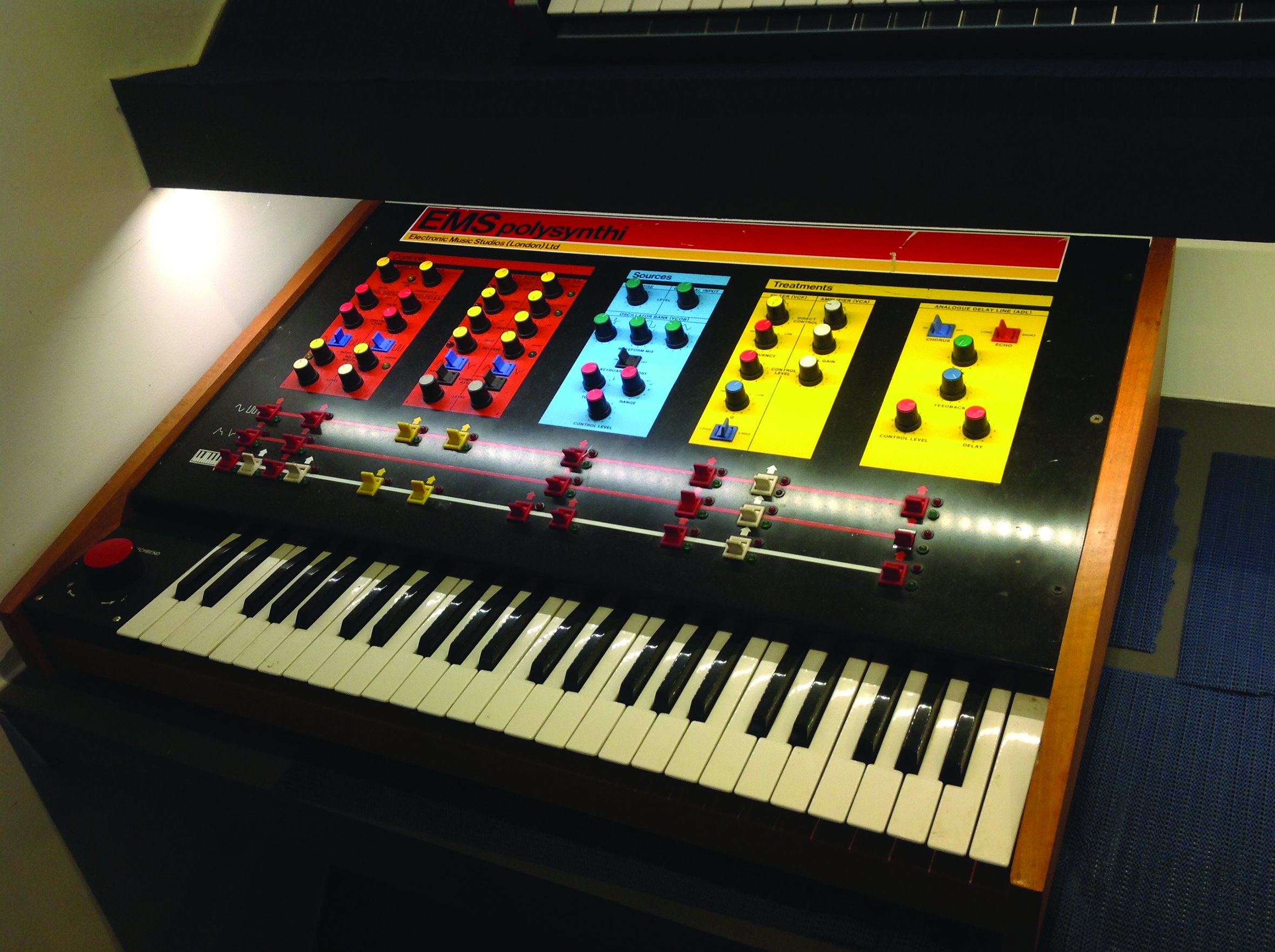
“A very rare beast – there are rumoured to be only 30 of these made. I love this thing – it’s completely bonkers with its built-in voltage-controlled analogue delay, and an aftertouch keyboard which works by pushing the entire keyboard down by about an inch. Also, the knobs all go backwards, for some reason. You turn them anticlockwise to go up to 10.”
E-mu modular
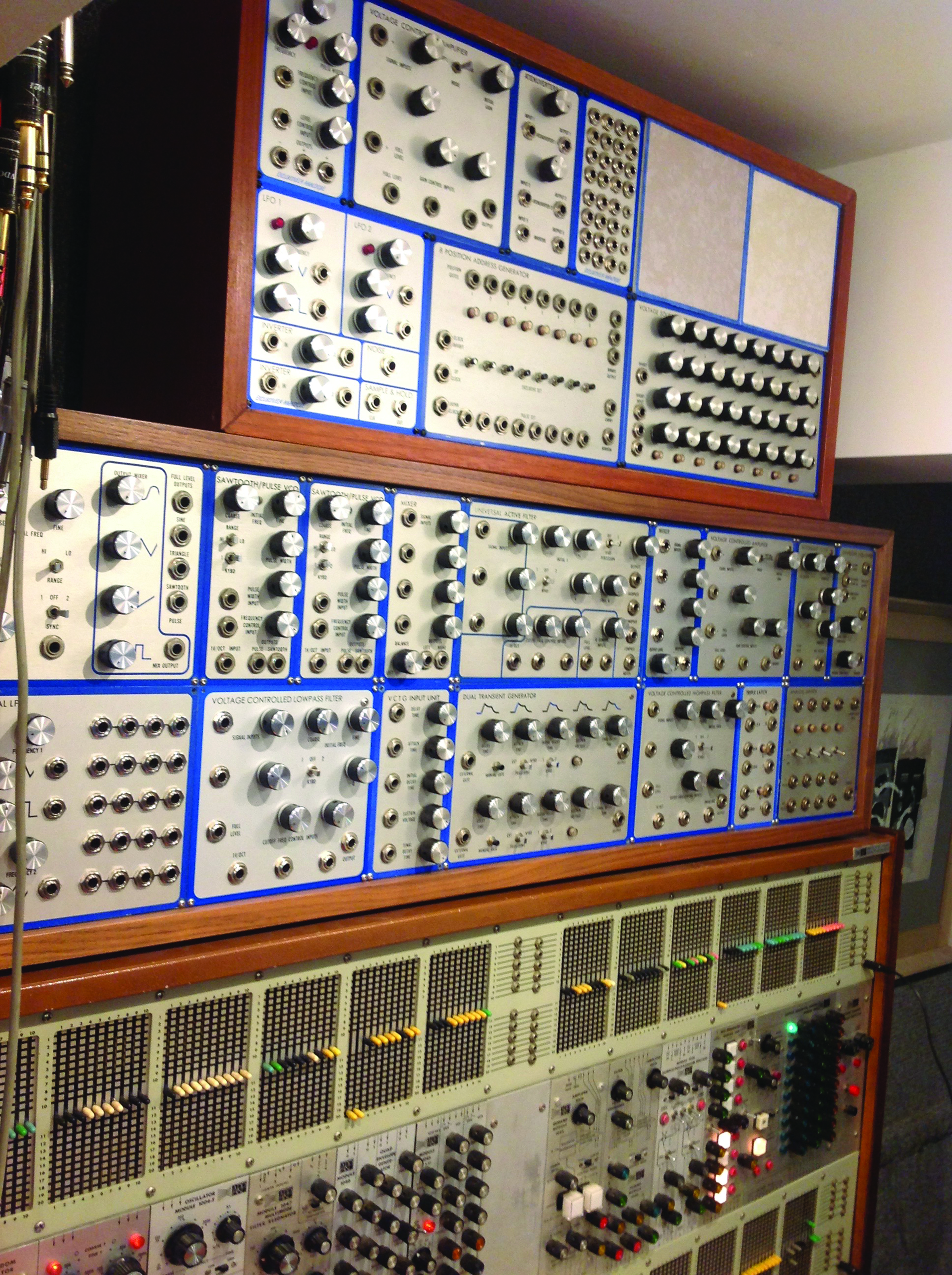
“These are very powerful-sounding systems with extremely well-thought-out components. I’ve put this system together bit by bit, including some of the very interesting logic modules that E-mu pioneered. They allow you to do things like set up unusual and complex generative sequences that you can set up to run by themselves.”
Formant modular
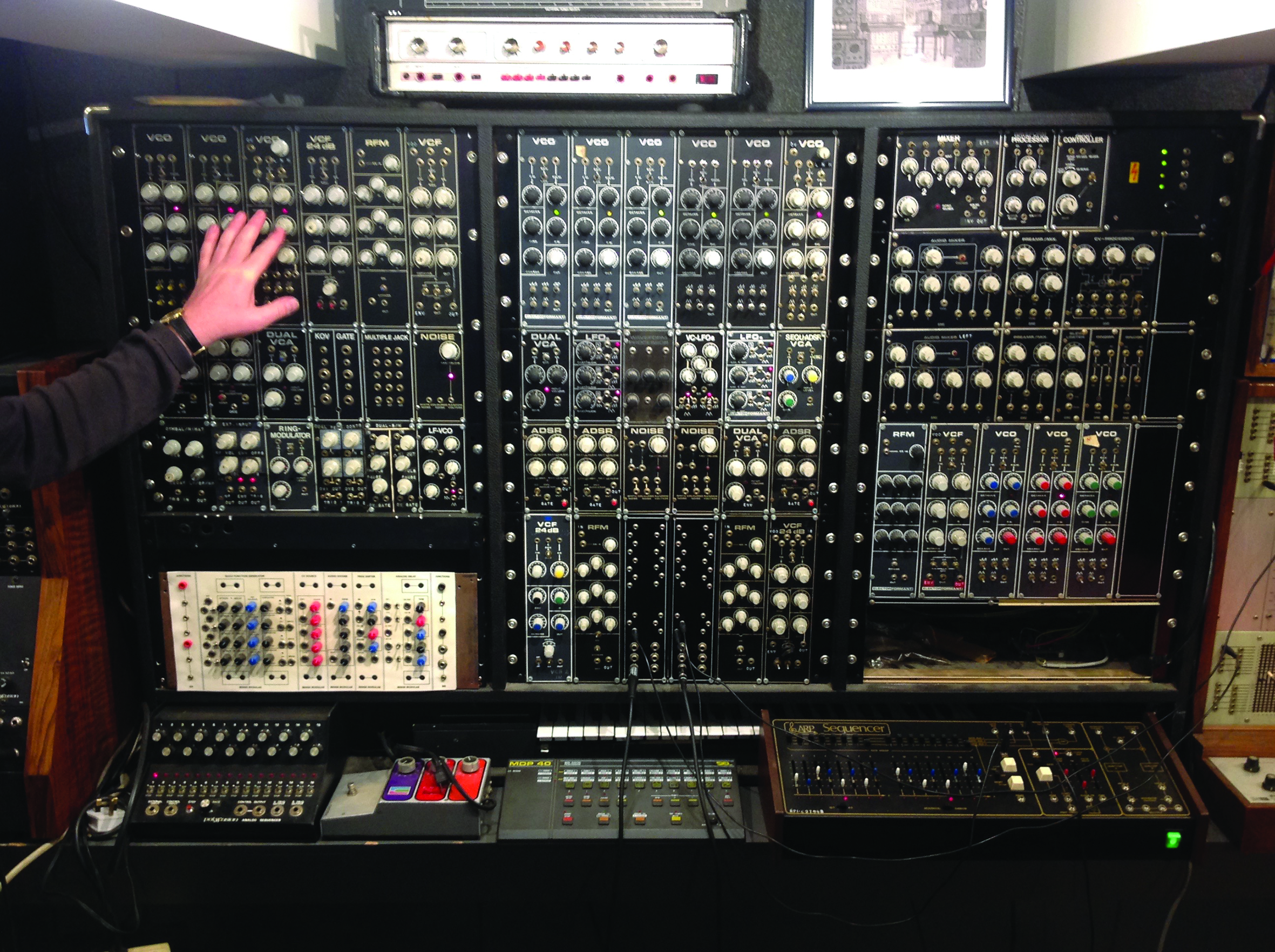
“This was made in the late 1970s from one of those kits that you used to get from a monthly magazine, in this case, a German mag called Elektor. So the construction quality is a bit hit and miss. It sounds really good though, a bit Moog-like in character. It’s got some unusual things in it too, like the hi-hat/percussion module, which I use all the time.”
No expectations
Neither Neil or Benge met to discuss the project face-to-face, but left it to the music to do the talking. “I didn’t even tell Neil that they were recorded in LA,” Benge adds. “It was quite a weird experience to be in LA on my own and I was pretty isolated. Maybe that sense of isolation came through in the music, because funnily enough, Neil brought it through in the lyrics.”
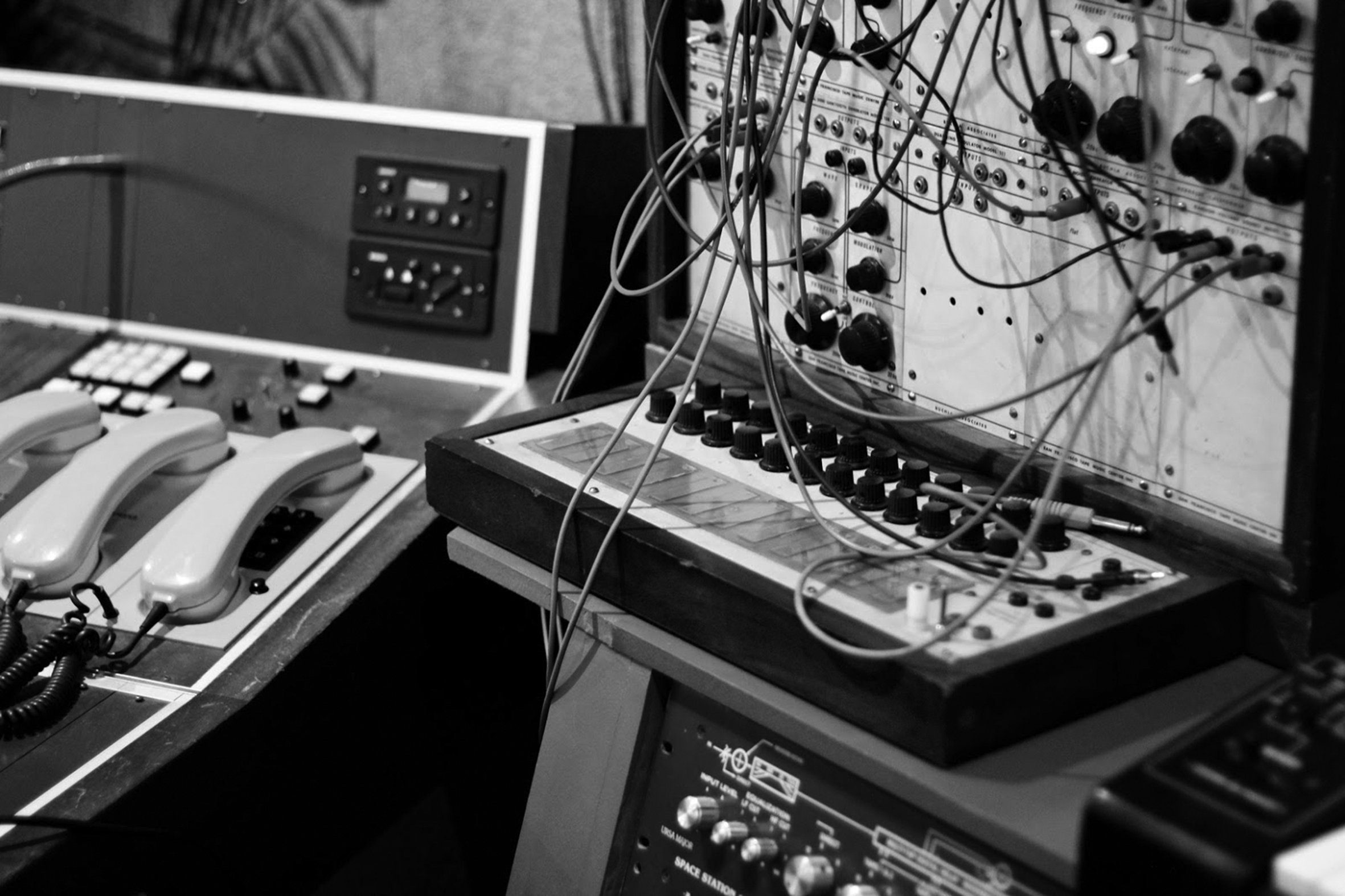
“My image of LA was also based on old 80s sci-fi soundtracks. That’s what I was trying to recreate. People like Harold Faltermeyer did these iconic soundtracks very much of that period. Neil’s vocals had an edge that really suits it, too, and it really helped by them not being recorded here. It worked brilliantly.”
“Owning a vintage Buchla is like joining a secret society – there’s a secret handshake”
And it was an equally enjoyable experience for Neil. “I didn’t feel that anyone was waiting,” he says. “If there are other people in the studio waiting it can be hard work, but with this process, we trusted each other to get on with it. I felt more relaxed and as the music was done already, I only had to do half the work!”
Future plans sadly won’t include touring the Fader material, simply as they have so much on. Neil has a new Blancmange album out in September, backed by two tours (one with old friends Heaven 17) plus a nine-CD boxset on Edsel Records. He’s also involved in a project called Near Future with Jez Bernholz, who plays in Gazelle Twin. Meanwhile, Benge is working on new Wrangler material
and a new album with John Foxx.